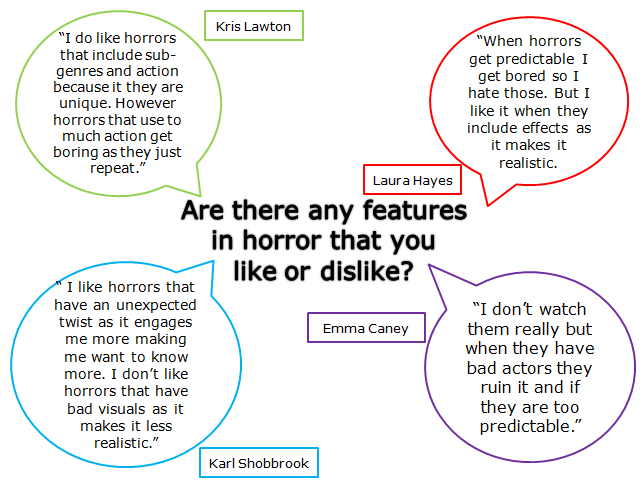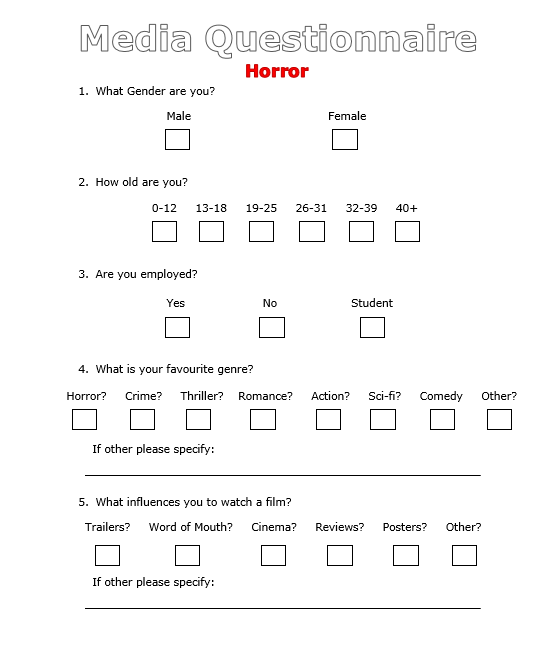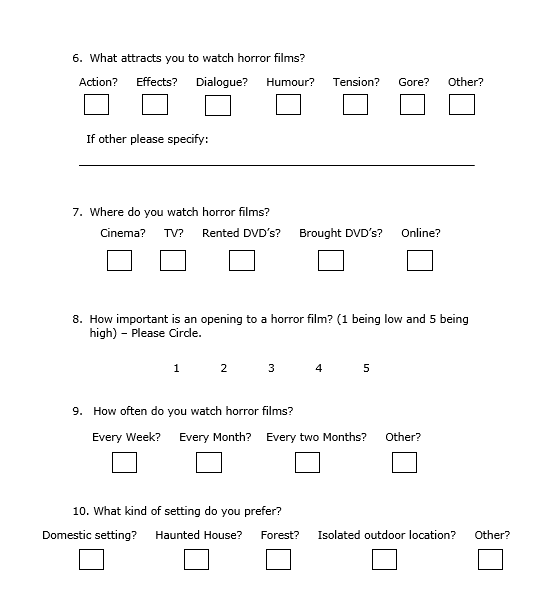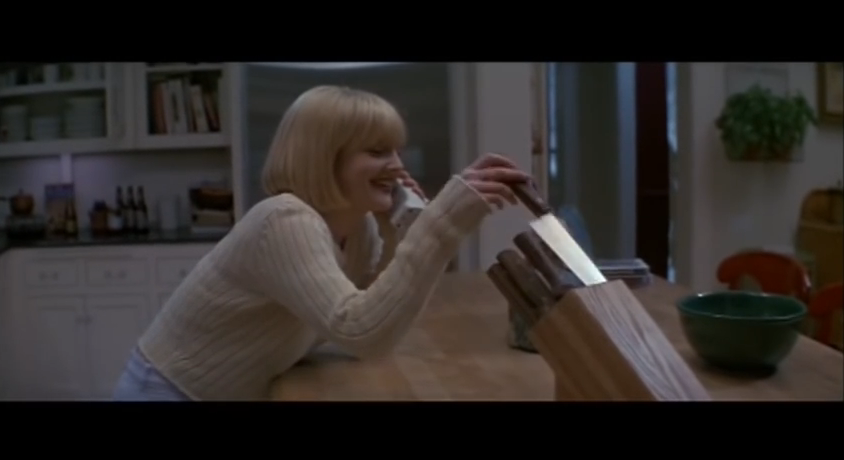Here I found that question 1 was how I expected, I aimed my questionnaire at people aged 13-15 as I knew that teenagers were the typical audience for horrors and this is reflected in my results. This has allowed me to gain a good understanding of my target audience as I will now aim my opening to teenagers.
Question two was to help me understand the types of people who are able to buy or watch movies, from my evidence it is clear to see that the majority of people who I asked were a student and employed meaning they have more social time and money to spend watching horrors. This has allowed me to understand who my audience is targeted at.
To gain an understanding of the audiences interest in horrors and overall genres. From my evidence I can understand that males have more of an interest in horror films, which helps enhance the stereotype of males being brave and watch to help increase masculinity. However the female audience prefer to watch 'safe' films where they don't have an aspect of fear.
Both genders are influenced by trailers which suggests that when I promote my film that a trailer will gather more attention from both male and female audiences. Word of mouth is also popular and this will help my film because if it is a good film it will allow free advertisement which benefits me and my movie.
This evidence will help me when I start production because it shows that both male and female audiences are attracted to horror films that use tension and gore. From this I can include tension and gore to attract audiences to watch my film.
I asked the audience where they watch horrors and from my evidence it shows that most audiences watch in the cinema and TV, this suggests that they enjoy having the home comfort, enhancing Maslow's Hierarchy of safety.
For this question I have found the average answer, the majority of my audience said that the opening is very important which helps as my final piece is an opening to a horror. This also implies that the opening sets up the rest of the film which attracts audiences.
I asked my audience what kind of setting do they prefer and the outcome shows that males and females prefer an isolated outdoor location which suggests that my location should be places outdoors as that is what my target audience wants.
The majority of my audience said that they either watch horror films every month or two months, this suggests that I should look for a gap in the market before publishing my film as I will target more audiences.
I asked my audience how horrors make them feel, my response was varied but more emotion was showed by the females implying that they have more fear from horrors compared to male audiences. However, the majority of votes from males was scared and excited suggesting that they like horrors with a build up of tension to get them excited.
I asked my audience if gruesome aspects frightened them, from my evidence it shows me that females are more frightened by gruesome aspects compared to males which suggests that when targeting my audience I should involve some gruesomeness to attract a wide range.
On this question, I found the average of all answers and this shows me the important of each aspect towards a horror. This shows me that the most important aspects that I must include are suspense and goriness. However the setting and chosen musics are also important to a horror film, so this confirms what I must include when making my horror opening.
What do you expect to see in an opening to a horror?
- Introduction to setting
- Introduction to characters
- High level of suspense
- Something that will engage the audience; eg death, killer, crime ect.
In my last question I asked an open question, for this I wrote the average answered from all questionnaires. This shows that these are the expectations from the audience that I should include in my opening sequence.


































